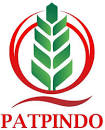ANALISIS KANDUNGAN PROTEIN DAN ORGANOLEPTIK TEMPE DENGAN MEDIA YANG BERBEDA
Analysis of Protein and Organoleptic Content of Tempeh with Different Media
DOI:
https://doi.org/10.36526/jipang.v4i2.2681Keywords:
Organoleptic, Protein, Soybean, TempeAbstract
Tempe is made from fermentation which generally uses soybeans. Soybean as a raw material for tempeh is a vegetable protein food that reaches 30.20% in a wet state and 34.90% in a dry state. The high consumption of tempeh by the Indonesian people encourages the tempe industry to innovate or look for soybean substitutes. The raw material in the form of imported soybeans causes dependence on imported soybeans to increase. The high price of imported soybeans is a major problem for the tempe industry and this problem is very dilemmatic because on the one hand the community still needs it. The results of the study indicate that the raw material for imported soybean tempeh can be substituted/replaced with beans as an alternative to reduce the number of Indonesian soybean imports. This study aims to determine the chemical characteristics of tempe and to determine the acceptability of tempe consumers with different media materials, the media used are soybeans, green beans, peanuts, and koro swords. The analytical method used in this study is a completely randomized design (CRD) consisting of 4 treatments and 4 replications so that a sample of 16 samples is obtained, with the materials used are soybeans, green beans, peanuts, sword beans (B1, B2, B3, B4). The results showed that the average protein content of green beans was 20.61%, soybeans 17.45%, koro swords 10.81%, and peanuts 9.97%. Meanwhile, the results of the organoleptic test in terms of color, aroma, taste, and texture of tempe from soybeans were still the most preferred tempe by the panelists.
References
Karsono. 2008. Pengaruh Jenis Kultur Starter terhadap Mutu Organoleptik Tempe Kedelai. www.repository.ipb.ac.id. Departemen Ilmu dan Teknologi Pangan, Institut Pertanian Bogor, Bogor.
Koswara, S. 1995. Teknologi Pengolahan Kedelai. Jakarta: Pustaka Sinar Harapan
Marcó, A., (2002). Comparison of the Kjeldahl method and a combustion method for total nitrogen determination in animal feed. Talanta, 57(5), 1019–1026. https://doi.org/10.1016/S0039-9140(02)00136-4.
Radiati, 2016. Analisis sifat fisik, sifat organoleptik, dan kandungan gizi pada produk tempe dari kacang non-kedelai. Jurnal Aplikasi Teknologi Pangan. 5(1).
Sarwono, 2010. Usaha Membuat Tempe dan Oncom. Penebar Swadaya. Jakarta.
Stone, and Joel. 2012. Sensory Evaluation Practices. Academic Press, USA.
Sukardi, Wignyanto & Isti P. 2008. Uji coba penggunaan inokulum tempe dari kapang rhizopus oryzae dengan substrat tepung beras dan ubi kayu pada unit produksi tempe sanan kodya Malang. Jurnal Teknologi Pertanian. 9:(3) 207-215.











